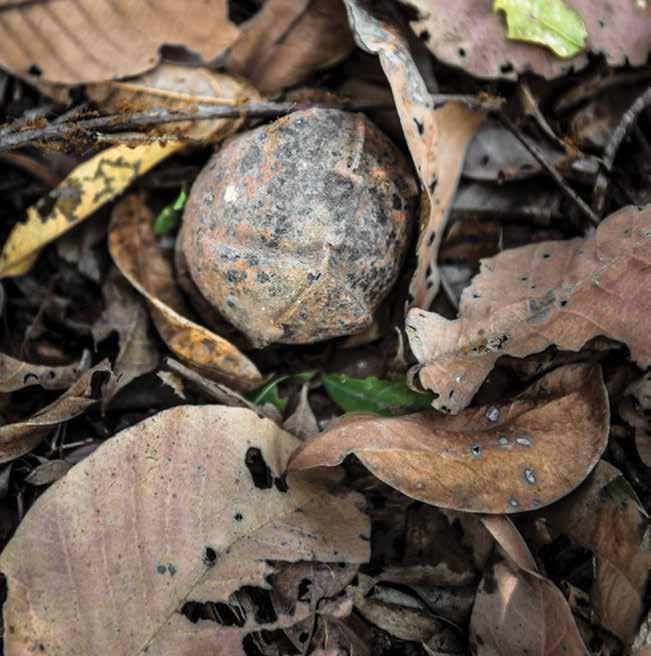
3 minute read
A Message from CISR
These past six months have been a time of reflection not only for me personally but also for the ever-evolving field of humanitarian mine action (HMA). After ten years of serving as CISR director, I have decided to accept a position as a tenured political science professor at James Madison University and pursue physical, spiritual, and writing goals. It has been an honor working with you as CISR Director during this exhilarating period for the HMA community. My successor, CISR Associate Director, Dr. Suzanne Fiederlein, is taking my position as Interim Director. I wish her and the wonderful, second-to-none team at CISR all the very best in this exciting time.
We have a very full Journal for this issue focused on topics including Southeast Asia and the Baltics, humanitarian IED clearance in Afghanistan, the use of augmented and virtual reality (VR) in mine action, as well as mine risk education apps and demining training aids.
Advertisement
SOUTHEAST ASIA • Ta Thi Hai Yen from Catholic Relief Services writes about their digital game-based MRE application for children ranging in age from eight to twelve. The app has features in both Vietnamese and English and can be downloaded for free from Google Play and Apple. • Authors Katrin Stauffer (RISKey GmbH) and Christelle Mestre (GICHD) write about the “Long-Term Risk Management Tool and Protocols for Residual Explosive Ordnance Mitigation: A Pretest in Vietnam” and the development of the framework of the Management of Residual Explosive Remnants of War (MORE) project. • Leading on from the MORE project, Allan Vosburgh writes about GWHF’s work in Vietnam, training the Vietnamese Provincial Military Command to international standards with the goal of enabling Vietnamese institutions to transition from proactive clearances to reactive responses. • Kimberley McCosker and Jan Erik Støa, (edited by Katherine Harrison) (NPA) discuss the joint publication, Cluster Munitions Remnants Survey: Best Practice in South East Asia, resulting from close cooperation between HALO, MAG, and NPA where lessons learned and agreed best practices are summarized for survey and clearance of cluster munition remnants in Cambodia, Laos, and Vietnam. • Bernard Franck, Donna Koolmees, and Sarah French from USAID Okard World Education, Inc. write on the development of their Community-Based Inclusive Development Demonstration Model which implements disability-inclusive policies in Laos. A second article about Laos is from Akihito Ontoku Hayashi (former JICA Advisor to UXO Lao) on improving the prioritization process of clearance activities by various organizations operating in Laos.
SOUTH AND CENTRAL ASIA • Alexander Tan from HALO writes about the development of a humanitarian IED clearance capacity in Afghanistan, specifically on the manual clearance of victim operated IEDs, and trialing safer and more efficient methods for the targeted clearance of abandoned improvised mines. • Mohammed Al-Husseini, Masoud Alipour, Hassan Ghaziri (Beirut Research and Innovation Center), and Ali El-Hajj (American University of Beirut) present a real-time video transmission system—the Demining Monitoring System— that can be employed to monitor the activity of deminers during clearance operations.
UNDERWATER DEMINING • Focusing on the Baltics and underwater demining, Torsten Frey (Leipzig University), Jacek Bełdowski (Polish Academy of Sciences), and Edmund Maser (Kiel University) discuss new tools for mine action operators the challenges of ERW and chemical warfare agents in the sea. V
R IN MINE ACTION • Sandra Bialystok (GICHD) looks at how a virtual reality experience illustrates how IEDs are impacting people’s safe return home through the immersive VR experience Home After War produced by NowHere Media and the GICHD. • Allen Dodgson Tan from the Golden West Design Lab discusses how their team has been applying augmented reality and VR technologies to create the Augmented Reality Ordnance Learning System (AROLS).
And finally, we feature a thought-provoking contribution from Lt. Col. Sean Kadlec from 20th CBRNE Command on the complex gray zone of post-conflict HMA and how using the strengths of the military and civilian organizations, as well as better communication and cooperation, can help to offset each other’s respective weaknesses.
Having returned in November from the Fourth Review Conference of the States Parties to the Anti-Personnel Mine Ban Convention meeting in Oslo, Norway, I am encouraged by the call for more meaningful participation of landmine survivors and people with disabilities. The World Health Organization estimates that 15 percent of the world population lives with a disability. Therefore, I would like to call on all organizations and governmental entities involved in HMA to set a target for employing survivors and people with disabilities by the Fifth Review Conference. Related to this call for action, the Summer 2020 issue of The Journal is seeking articles on victim assistance and the integration of disability rights in HMA. For more information, please see our call for papers at https://www.jmu.edu/cisr/ journal/cfps.shtml. We’d love to hear from you.










